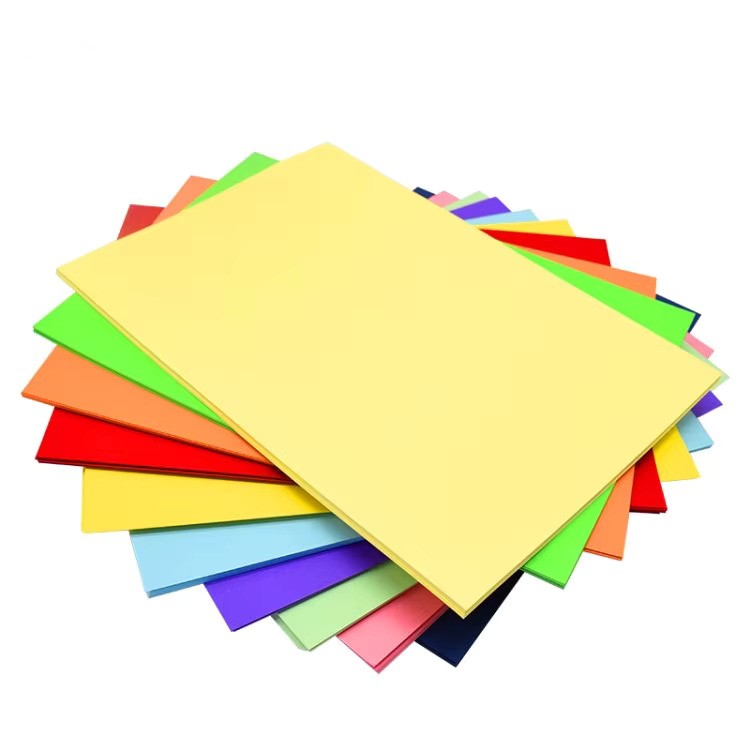
Large coloured paper offers bright choices for art and work. You can pick from many types. Construction paper is good for crafts. Tissue paper works well for wrapping gifts. Cardstock is used for greeting cards. Copy paper is for printing in color. Origami paper has patterns for folding. Specialty paper can have metallic or glitter looks for fancy things.
Pick the paper that fits your project best. Think about how color and texture affect your work’s look and feel.
Key Takeaways
Pick the best colored paper for your project. Construction paper works well for crafts. Cardstock is good for invitations.
Think about how thick and heavy the paper is. Heavy paper feels strong. Light paper is easier to send in the mail. Light paper also costs less.
Use bright colors to help your project get noticed. Colors can change how people feel. Colors also help share your message.
Try out paper samples before you buy them. This makes sure the paper is right for printing. It also helps with crafting needs.
Choose paper that fits your project’s purpose. Some papers are better for printing. Other papers work well for crafts or packaging.
Large Coloured Paper Overview
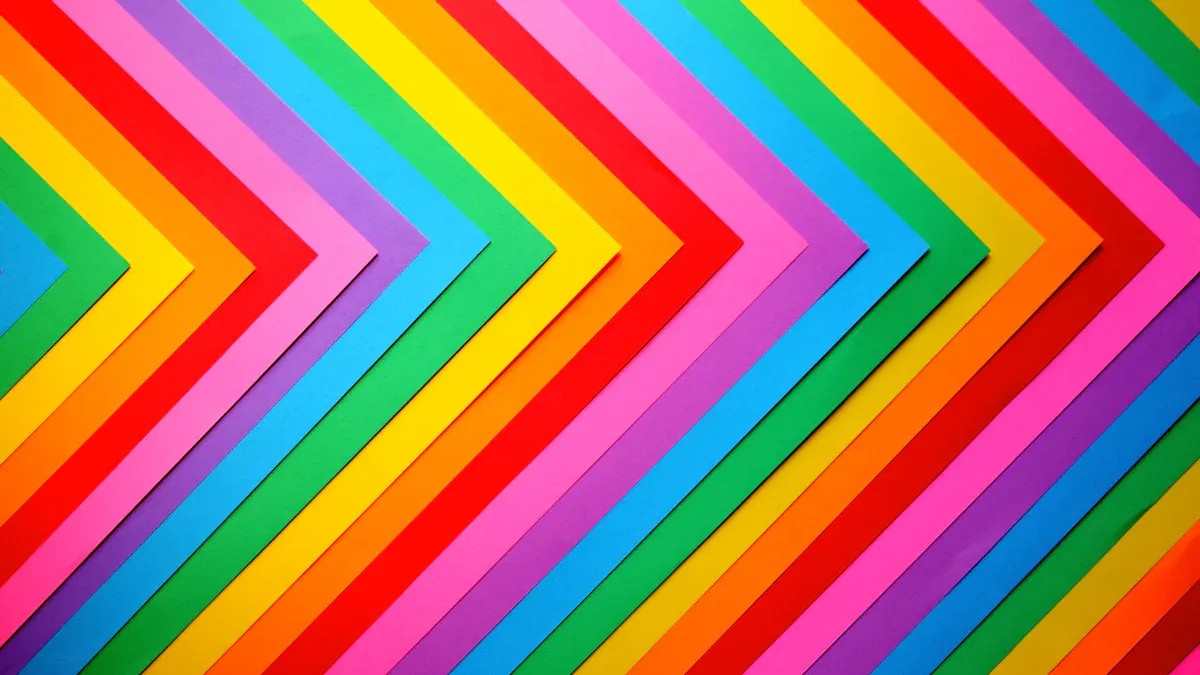
What Is Large Coloured Paper
Large colored paper is easy to spot. It is bigger than regular printer paper. People use it for posters and displays. It works well for packaging and crafts. Companies use it for branding and marketing. Teachers use it for classroom projects. They also use it for bulletin boards. Crafters use it for scrapbooking and decorations. The big size gives you more room. You can make bold designs or cover large areas. Colored paper stands out because it is bright. It can be smooth or have texture. You can choose from many colors and types for your project.
Color paper makes any project look lively and fun. Bright colors help your work stand out. They make your art pop and grab attention.
Why Color Paper Matters
Colored paper is not just pretty. It helps you sort information and set a theme. Bright colors catch people’s eyes. They help set the mood for events. In business, colored paper helps people remember your brand. Using colored paper for packaging makes opening boxes exciting. Customers like seeing packages with bold colors. You can pick colors that match your brand or event.
Here is how colors can make people feel:
| Color | Associated Emotions/Values |
| Red | Excitement, passion, strength, action |
| Orange | Cheerful, confident, creativity |
| Yellow | Optimism, energy, happiness |
| Green | Freshness, growth, harmony |
| Blue | Trustworthy, calm, intelligence |
| Purple | Luxury, wisdom, exclusivity |
| Pink | Playful, beauty, love |
| Brown | Comfort, natural |
| Black | Elegance, sophistication, authority |
| White | Purity, simplicity, new beginnings |
| Grey | Neutral, balanced |
The right color helps you make a strong first impression. You can sort and group information. Colors can make people feel different emotions. Colored paper works well in print projects. It is great for packaging and marketing. Your project will stand out and get noticed.
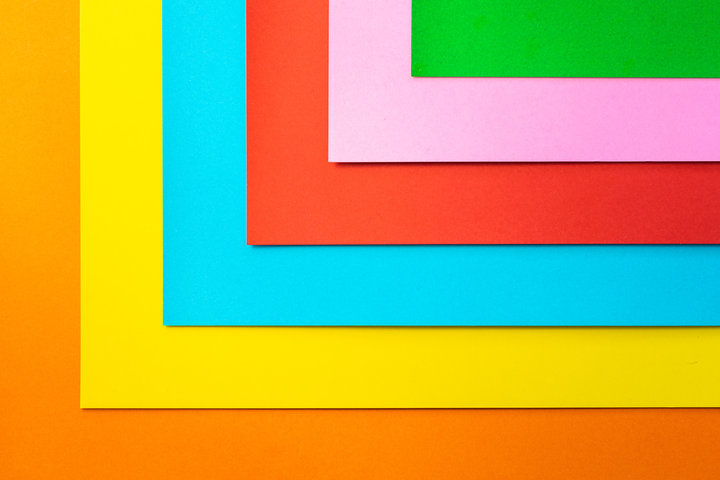
Types of Paper for Large Coloured Projects
When you begin a big colored project, you should know about paper types. Each kind of paper has special features for certain uses. Learning about these features helps you pick the right paper. Here are some common types you will see:
Copy Paper
Copy paper is used a lot in many places. You find it in schools, offices, and homes. It is light and smooth, so it is good for printing. Colored copy paper comes in many colors. You can use it for flyers and posters. Copy paper dries fast and does not smudge much. This makes it great for simple print jobs.
Tip: Pick copy paper for daily printing and colorful documents.
Here is a table that shows how copy paper is different from other papers:
| Type of Paper | Characteristics | Use Case |
| Regular Matte Paper | Smooth and dries fast to stop smudges. | Basic print jobs and documents |
| Glossy Paper | Shiny and smooth with bright colors; dries slower. | Photos and colorful images |
| Bright White Paper | Very smooth and bright white surface. | Documents with photos that need bright finish |
| Photo Paper | Has different textures and is thicker. | Printing photographs |
| Heavyweight Paper | Thicker paper, like cardstock; weight varies. | Projects that need strong paper |
| Inkjet Paper | Made for inkjet printers with liquid ink. | Printing with desktop inkjet printers |
Bond Paper
Bond paper is stronger than copy paper. You use it for important papers and certificates. It feels crisp and holds ink well. Colored bond paper works for business reports. Bond paper makes your work look professional.
Note: Use bond paper when you want colored papers to look formal and last longer.
Cardstock
Cardstock is thick and strong. You use it for cards, invitations, and menus. Cardstock can handle lots of ink and can be glossy or matte. It is perfect for projects that need to last and look nice.
Here is a table that compares cardstock to other colored papers:
| Property | Cardstock | Other Colored Paper Types |
| Durability | Thicker and stronger | Not as strong as cardstock |
| Weight (GSM) | 350-450 GSM | Usually lighter (like 55 GSM) |
| Print Quality | High, can be glossy or matte | Lower with lots of ink |
Cardstock is thicker than regular paper.
You use it for sturdy things like invitations and cards.
Cardstock can be shiny or not shiny.
Construction Paper
Construction paper is great for art and crafts. It is cheap and comes in bright colors. You use it for decorations and models. Construction paper is easy to cut and glue. This makes it good for school projects.
Here is a table that shows why construction paper is useful:
| Advantage | Description |
| Versatility | You can use it for many crafts, even 3D projects |
| Affordability | It is cheap, so schools and groups can buy it |
| Visual Appeal | Bright colors make projects fun and interesting |
Scrapbook Paper
Scrapbook paper is made for creative projects. It has lots of patterns, textures, and colors. You use it for backgrounds and crafts. Scrapbook paper is thicker than copy paper but thinner than cardstock. It makes your projects look nice.
You can use scrapbook paper for ornaments and gift bags.
It works for magnets, coasters, and gift tags.
Scrapbook paper decorates frames and phone cases.
You can make bowls and candle holders with scrapbook paper.
Tip: Scrapbook paper is good for planned crafts and quick ideas.
Crepe Paper
Crepe paper is soft and stretchy. You use it for party decorations and crafts. Crepe paper streamers fill big spaces with color. You can hang them or make loops for a rainbow look. Crepe paper is cheap and easy to shape.
Crepe paper streamers are good for decorating parties.
You can use them for themed decorations and colorful backgrounds.
Crepe paper is great for making flowers and garlands.
Glossy and Matte Paper
Glossy and matte papers look and work differently. Glossy paper is shiny and makes colors bright. You use it for marketing, calendars, and booklets. Matte paper is smooth and not shiny. It is good for soft colors and art prints.
Here is a table that compares glossy and matte paper:
| Matte Photo Prints | Glossy Photo Prints |
| Reflective Qualities | No glare in bright light | Can have glare |
| Color Qualities | Good for soft colors | Colors are bright |
| Surface Qualities | Does not smudge easily | Shows smudges and fingerprints |
| Use Cases | Art prints and manuals | Calendars and booklets |
Note: Use glossy paper for bright pictures and matte paper for easy reading.
Specialty and Textured Paper
Specialty and textured papers make your projects look fancy. Linen paper has a cross-hatch feel. Felt paper is soft. Laid paper feels ribbed. Parchment paper is good for formal papers. Metallic paper shines and catches the eye.
Linen paper is good for invitations.
Felt paper works for cards and stationery.
Laid paper gives a handmade look.
Parchment paper is for certificates.
Metallic paper is for special events.
You can pick different weights and sizes for your projects. Specialty papers are good for crafts, presentations, and important documents. Use A4 for daily printing or thicker paper for special projects.
Tip: Specialty and textured papers help you make unique and memorable designs.
Uses of Large Coloured Paper
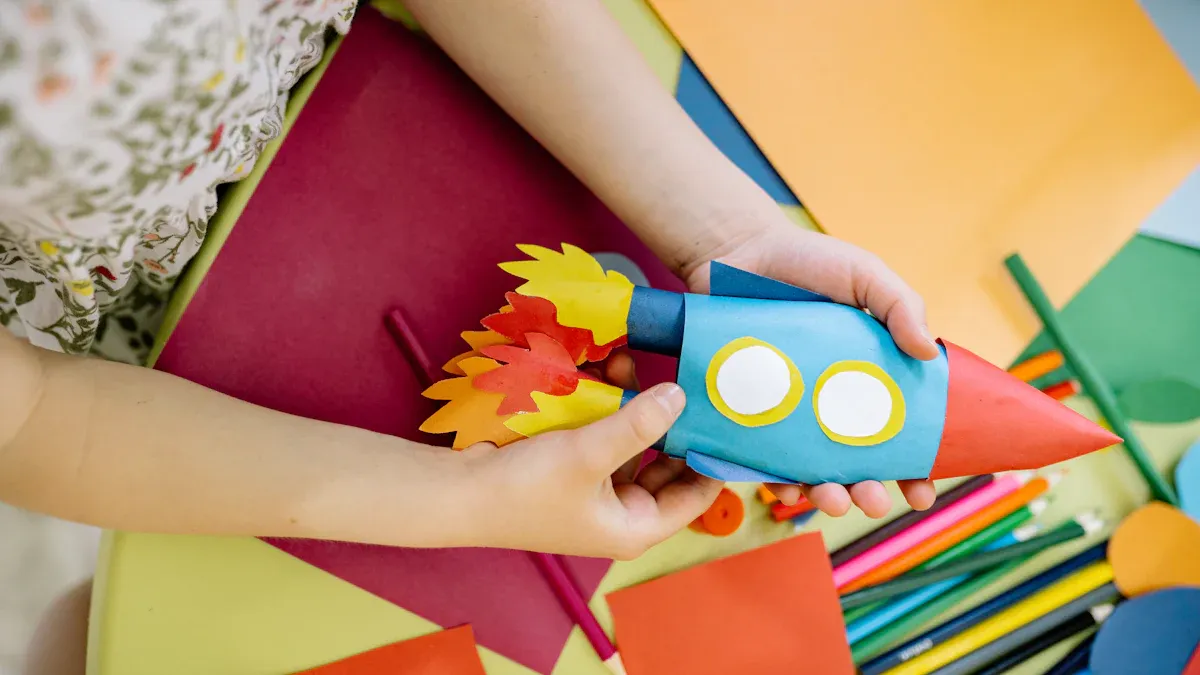
Image Source: pexels
Art and Craft Projects
Large coloured paper is great for art projects. You can use it to make bright and cool designs. Art paper comes in different textures and thicknesses. Pick the one that works best for your idea. You can make collages, posters, and mixed media art. Teachers use colored paper for murals and classroom displays.
Tissue paper is a top choice for crafts. You can use it for decorations and home décor. It is also good for greeting cards. Layering tissue paper makes your art look deeper. You can make tissue boxes, notebooks, and bookmarks. Quilling and layering help you make fancy art. Tissue paper flowers are fun for home and party decorations.
| Use of Tissue Paper | Description |
| Decorative Crafts | Make cool decorations and useful things. |
| Home Décor Items | Create garlands, wreaths, and seasonal decorations. |
| Personalized Greeting Cards | Add layers for more interest. |
| Functional Items | Make tissue boxes, notebooks, and bookmarks. |
| Intricate Designs | Try quilling and layering for fancy art. |
| Tissue Paper Flowers | Make flowers for home and parties. |
You can find tissue paper in craft stores and online. Big packs are cheap, so you can use them for many projects. Colored paper makes art easy for everyone. You can cut, fold, and glue sheets to make new shapes. Art paper lets you try painting, stamping, and drawing. You can use colored paper for origami, pop-up cards, and shadow boxes. Art projects with colored paper help you be creative and learn by doing.
Packaging and Branding
Large coloured paper is important for packaging and branding. You can wrap products or line boxes with colored paper. Businesses use it to make their products stand out. Colored paper helps set a mood and get attention. Pick colors that match your brand or event.
Packaging paper comes in tissue, kraft, and glossy types. You can use colored paper to wrap gifts or protect items. It also adds a nice look to packages. Packaging paper makes opening boxes special. You can print logos or patterns on colored sheets. This helps people remember your brand.
Colored paper is good for product tags, labels, and inserts. It helps organize shipments and show special offers. You can fold big sheets to make bags, envelopes, or boxes. Colored paper lets you try different textures and finishes. You can pick matte, glossy, or metallic paper.
Businesses use packaging paper to build their brand. Pick colors that show what your company stands for. Packaging paper helps keep products looking the same. You can use colored paper for holiday packaging or special events. It works for small and big companies.
You can use packaging paper for eco-friendly projects. Recycled colored paper helps save resources. You can reuse packaging paper for crafts or storage. Colored paper for packaging saves money and helps the planet.
Packaging paper helps with creative marketing. You can design wraps, gift boxes, and promo items. Colored paper helps you connect with customers and build loyalty. Use packaging paper for giveaways and special events.
Business Documents and Marketing
Large coloured paper is useful for business documents and marketing. You can print flyers, brochures, and posters on colored paper. This makes your materials look better and easier to remember. Bright art paper draws attention to your message.
Large colored paper rolls are cheap and flexible for business. You can make documents and marketing materials fit your needs. Colored paper helps highlight important info and organize content. Print reports, presentations, and certificates on colored sheets.
Businesses use colored paper for mail campaigns. You can make postcards, coupons, and invitations. Colored paper helps you stand out from others. Pick colors that match your brand and audience.
Colored paper works for catalogs, menus, and price lists. Glossy or matte art paper looks professional. Colored paper for business documents gives a polished look. Print charts, graphs, and images for more impact.
Marketing teams use colored paper for signs and displays. You can make banners, table tents, and posters. Colored paper helps you share your message clearly. Use it for trade shows, conferences, and events.
Colored paper is good for business cards and stationery. Art paper with cool textures makes your brand special. Colored paper for business documents helps build trust and recognition.
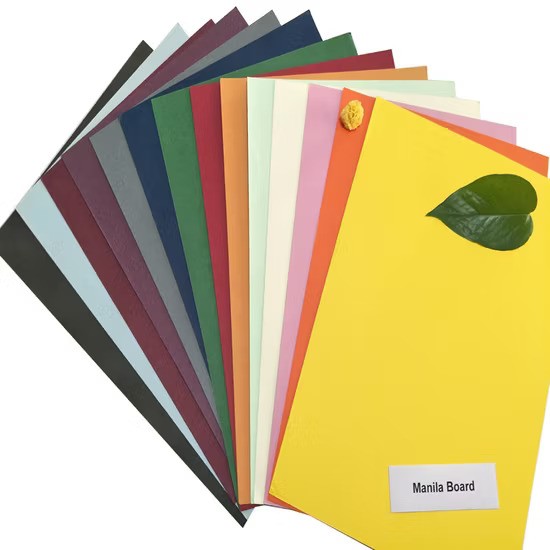
Educational Displays
Large coloured paper is great for educational displays. You can make bulletin boards, charts, and posters with it. Teachers use colored paper for murals and group projects. Colored paper helps students share ideas and learn new things.
You can use colored paper for timelines, maps, and diagrams. Art paper adds color and detail to school materials. Colored paper makes learning fun and hands-on. Cut, fold, and glue sheets to make 3D models and visual aids.
Large colored paper is good for teamwork and creativity.
You can use colored paper to show what you know.
Colored paper helps students learn by doing group projects.
Colored paper works for science fair boards, math charts, and reading corners. Art paper helps organize info and highlight key points. Colored paper for displays gets students involved.
Teachers use colored paper for rules, schedules, and announcements. Decorate doors, windows, and walls with art paper. Colored paper for displays makes classrooms welcoming.
Colored paper is good for student portfolios and project folders. Art paper helps students be creative and express themselves. Colored paper for displays helps students gain skills and confidence.
Event Decorations
Large coloured paper is perfect for event decorations. You can make banners, garlands, and table runners. Art paper lets you design decorations for parties and celebrations. Colored paper helps set the mood and theme.
Paper Stars: Hang stars for a magical look.
Cherry Blossom Mobile: Brighten up any room with a pretty mobile.
Paper Leaf Table Runner: Make your table look nice with paper leaves.
Make Large Paper Rosettes: Use wrapping paper or cardstock. Make rosettes in different sizes.
Create Paper Garlands: String together scrap paper or magazine pieces.
Design a Paper Leaf Table Runner: Use paper leaves for a fun table runner.
Hanging Star Decorations: Put stars on walls or hang them up.
Cherry Blossom Paper Mobile: Make a mobile that can be a lantern.
DIY Paper Garland: Use different colors and patterns.
Colored paper is good for photo booth backgrounds, centerpieces, and party favors. Art paper lets you try new shapes and textures. Colored paper for decorations helps make events special.
Colored paper works for invitations, place cards, and thank-you notes. Art paper adds a personal touch to your party. Colored paper for decorations helps you celebrate holidays and birthdays.
Colored paper is good for stage props and costumes. Art paper helps you be creative and use your imagination. Colored paper for event decorations can change any space.
Tip: Mix colors, patterns, and finishes to make cool decorations. Colored paper gives you lots of choices for your design.
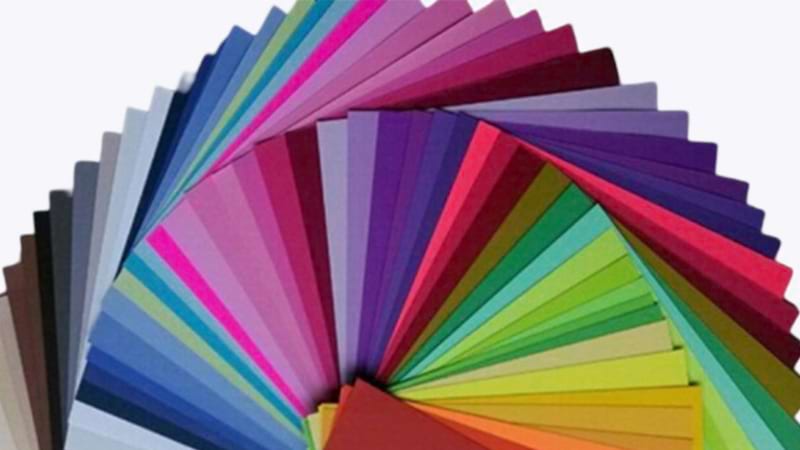
Selection Tips for Large Coloured Paper
Picking the right large coloured paper is important. It can change how your project turns out. You should think about paper weight, texture, color brightness, and your budget. These ideas will help you choose well and get good results.
Paper Weight and Thickness
Paper weight changes how your project feels. Heavy paper feels strong and fancy. Light paper is easy to use and cheaper to mail. You need to think about strength, price, and how easy it is to use.
Heavy paper costs more to ship and use. This makes it less good for big projects.
Light paper is better for mailing lots of things. It helps save money for catalogs or reports.
The right weight gives you the look and strength you want.
Heavy paper lasts longer and seems nicer.
Light paper is best when you need to save money.
Tip: Pick thick paper for invitations. Use thin paper for flyers.
Texture and Finish
Texture and finish change how paper looks and feels. Smooth paper is good for business papers. Textured paper like embossed or coated feels special. Matte and glossy finishes change how paper looks and lasts.
Smooth paper is best for reports and printing.
Embossed and coated paper feels different and special.
Matte finish is not shiny and easy to read.
Glossy finish is shiny and keeps colors bright.
| Texture/Finish | Best Use Case | Visual Effect |
| Smooth | Professional documents | Clean and crisp |
| Embossed | Invitations, crafts | Rich and detailed |
| Matte | Manuals, art prints | Soft and subtle |
| Glossy | Calendars, booklets | Bright and shiny |
Tip: Touch the paper before you buy it. Pick a finish that fits your style.
Color Vibrancy and Ink Impact
Bright colors make your project stand out. Good large coloured paper gives you sharp and bold colors. Picking the right paper helps your work look great. If you want strong graphics, use paper that shows ink well.
Good printing paper keeps colors bright and clear. The paper you pick can make your work look better.
Tip: Try your ink on a test sheet. Make sure the colors look bright enough.
Project Purpose and Compatibility
Match your large coloured paper to what you need. Some papers are better for printing. Others work best for crafts or wrapping. Always check if your paper works with your printer and ink.
| Paper Finish | Compatible Ink Types | Key Features |
| Matte | Water-based inks | High-contrast, instant dry, waterproof |
| Glossy | Water-based inks | Vivid color reproduction, sharp details |
| Satin | Water-based inks | Smooth surface, soft sheen |
Tip: Pick paper that works with your printer and ink. This stops smudges and helps you get good results.
Sample Testing and Budget
Testing samples helps you pick the best large coloured paper. Try different sheets before buying a lot. This lets you check print quality, strength, and color staying power.
Check the paper used for printing to get good results.
See how the paper handles light and water.
Print a test page to see how it works.
Put samples in sunlight to see if colors fade.
Make sure your choice fits your project and needs.
Budget matters when picking paper. Better paper costs more but can make your project last longer. You need to find a balance between price and quality.
Tip: Always test samples and set your budget first. This helps you avoid mistakes and save money.
Large colored paper is strong and useful for many things. You can use it for drawing and painting. It works for origami and book covers. Greeting cards and classroom projects also use colored paper. Picking the right weight, finish, and color helps your work look better. It makes your project fit what you need. Try different types to see which one you like.
FAQ
What is the best color paper for printing posters?
You should choose color paper with a smooth surface for printing posters. Bright colors like red or yellow grab attention. Matte paper works well if you want less glare. Always test your design before printing to see how the colors look.
Can you use color paper for printing certificates?
Yes, you can use color paper for printing certificates. Bond paper gives a formal look. Pick colors that match your event. Matte paper helps your printing look sharp. Try different colors to find the best design for your guide.
How do you pick colors for your design projects?
Start with a guide to help you choose colors. Think about the mood you want. Use color paper samples to test your printing. Bright colors work for fun designs. Soft colors fit calm projects. Always match your colors to your design idea.
Tip: Use a color wheel to explore new color combinations for your printing projects.
Does matte paper work for printing colorful designs?
Matte paper works well for printing colorful designs. You get soft colors without glare. This paper helps your printing look clean. Try matte paper for art prints or guides. Always check how your colors appear after printing.
Can you print on both sides of color paper?
You can print on both sides of color paper. Make sure the paper is thick enough. Thin color paper may show printing through. Test your printing first. Use matte paper for guides and double-sided designs. Choose colors that look good on both sides.
| Paper Type | Double-Sided Printing | Best Use Case |
| Matte Paper | Yes | Guides, brochures |
| Bond Paper | Yes | Certificates, reports |
| Cardstock | Yes | Invitations, cards |






























